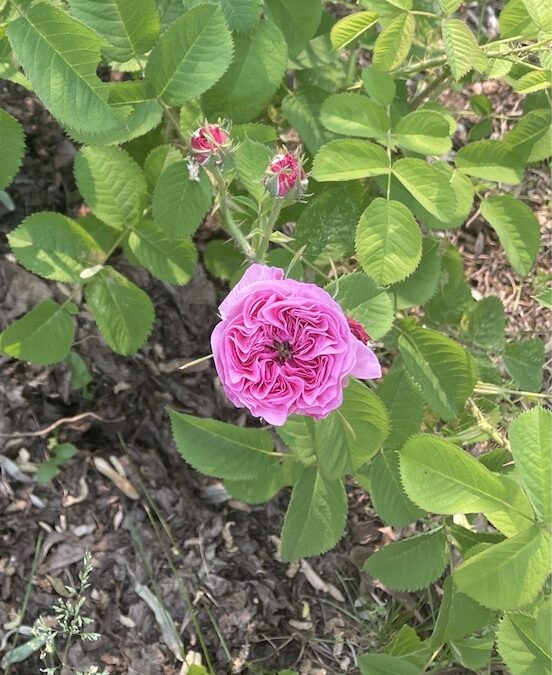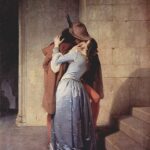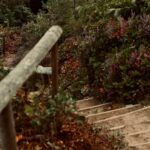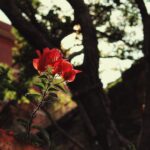What happens when two worlds touch?
They kiss.
And we find that love is not only felt in the hearts, it is known by the hands also.

Beauty and the Beast by Angela Barrett
The Wild Marriage is a narrative often explored in folk, tale and myth. Animal bridegroom stories are present in almost every culture, and this story element can be traced back to 4,000 years, which is long before Beauty and the Beast was written.
The unknowingness of the mystical and the wild will always be seductive; it draws us further in, so that we explore the mysteries of our unique physical and emotional wildlands.
The truth is, we’ll never fully know all the wild parts of our partners, just like perhaps we’ll never fully know our own. But we can choose to love and be loved. And we become not only lovers, we become mystics, exploring and re-exploring each other no matter how many years we’ve lived together under the same roof. This is the art of loving.
The enchantment of love itself has its own divine timing for when two worlds will touch one another as we step into the unveiled. And lovers’ meetings are often destined. No matter how many straight and direct roads we build, life’s paths are often twisting and turning and have their own invisible maps and geographies – guided by the call of our soul. But when it finds us, it’s an invitation to step into a deepening beyond the shroud of our skins. And if we accept, there will be attention, there will be engagement, and there will be mutual decision making.
And so … we follow the melodies at the very edge of our hearing, along the leafy paths that seeking lovers often take. We’ll be fairy-led, love-led, scent-led, deep into the wild unknown. In these mysterious places, some may get lost or distracted and never come back, while others will actually find themselves and come into a deeper love than ever before.
Beauty and the Beast: The Love Within
While many fairy tales are usually stories handed down from our distant pasts, most of which were only as oral storytelling, Beauty and the Beast is a literary work by French writer Gabrielle-Suzanne Barbot de Villeneuve in 1740. She was part of the second wave of French fairy tales writers, the first one being comprised of Charles Perrault and others, some fifty years earlier. When de Villeneuve sat down to create the beloved tale, she was greatly influenced by earlier salonnières, as well by Apuleius’ “Cupid and Psyche” and old folk tales of animal bride and bridegrooms. The original version of this story is over one hundred pages long and is somewhat different in themes than the shorter narratives of today. To understand why, we need some context by looking at its history.

Beauty and the Beast by Adrienne Segur
De Villeneuve used the metaphorical language of fantasy to bring forth societal issues during her time. The main one being: the marriage system in which women did not have any legal rights. They had no choice of who they could marry, no right to refuse the marriage nor bed, no right to control their own property, and no right to divorce. They were often given to men much older, and despite abuses they’d have to stay in the marriages. Those who didn’t want to stay, and were rebellious, were often locked up in mental institutions or banished to a convent. The story of Rapunzel addresses these challenges as well, as the tower symbolizes the isolation and banishment that many women faced, and you can read more about it in What Rapunzel Knows. Many of the fairy tales and salonnières were sharply critical of how women were treated and intended to inspire ideals of love, fidelity, and civilité between the partners. Tales reflected the realities people lived with, and also, the dreams of a better way of life, and of love. Animal bridegroom stories, in particularly, embodied the real life fears of women who often times were married to total strangers, and whether they’d find a prince or a beast in their bed was yet to be unveiled.
De Villeneuve’s story begins with Beauty’s fate lying in the hands of her father, who gives her over to the Beast to save his own life. The Beast is truly a frightening figure, and definitely not a sweet gentle soul disguised in fur; he has lost all touch and sense to the human world that he once belonged to. The emphasis of the tale is on the transformation of the Beast, who ultimately finds his way back to the human world and to his own beating heart. Unlike many of the modern day versions of the story, the original Beast was truly a monster who then reclaimed himself by love.
Sure, Beauty had a kind soul and true heart, which gave her the ability to see beyond the face; she recognized the sadness and kindness in his eyes as time went by, but it was him who had to also see it within himself. Love can only be true and grow if we are true to our selves. At first she rejected his marriage proposal, because she was completely frightened by him, and he became incredibly angry; but as time went by, he started transforming, reconnecting to his human nature, to his joy and to his emotions; he started being more gentle, emotionally expressive, caring, understanding, and he started behaving of love.
The truth is that no matter who or what awakens that initial spark within us to change – it is only our choice and effort to actually do it; no one can do that for us and it is unhealthy for us to believe that we can fix or change someone. That’s not how relationships work.

Beauty and the Beast by Kinuko Y. Craft
Beauty is the gentlest person in the story and yet she is also the strongest. In many ways, she is often portrayed as a young fool who bows to her father’s wishes whatever they are. But she shows to be brave, responsible, discerning, insightful and most of all, loving and compassionate. She has the ability to see beneath the shrouds of skins and the essence of everything around her; she sees the kindness and sadness in Beast’s eyes despite his frightening appearance and yet she still refuses to marry him unless he changes his behavior; she is able to stand up for herself when she needs to. She is also not a perfect character; she makes her own mistakes and while her own transformation is more subtle than Beast’s, she also grows. Beauty has a deep understanding, a calm courage, a quiet power and she sees through her heart; these kinds of strengths are not obvious at first but they are what truly matters for this defines our character. While quiet, soft and gentle, when problems approach in her life, she has the ability and inner strength to know what to do, act on it and believe in her own judgment.


Beauty and the Beast by Angela Barrett
Sixteen years after Villeneuve’s version, Mme Leprince de Beaumont shortened the story and published it for young ladies. In her story, she toned down the sensual imagery and critique of forced marriage, and shifted the emphasis away from the Beast’s need for transformation to the need of the heroine to change – as she must learn to see beyond appearances and recognize the kindness of the Beast before his transformation. She is also free to leave the castle but chooses to stay to honour her father’s wishes even if she doesn’t initially want to stay. This version moved away from the French salons of adult stories towards the children’s tales and nurseries as it was meant for younger readers. And by the 19thcentury, the Beast’s monstrous shape is only just a kind of costume that he wears, which doesn’t pose any danger or sexual threat to Beauty in the children’s stories.

Beauty & the Beast directed by Jean Cocteau & René Clément, starring Jean Marais and Josette Day (1946). All rights reserved by the artists and film. Source: Bibliothèque nationale de France, Public domain, via Wikimedia Commons.
In 1946, the story started to make its way back to the adult versions with Jean Cocteau’s film version, La Belle et la Bête. In the film, Beast’s sexuality is powerful and strong and Beauty’s adventure can even symbolize her sexual awakening. Beauty’s nightly refusal of the Beast, and the slow awakening of her passion and attraction are contrasted with Beast’s struggles to contain his own animal nature. This is actually quite similar to East of the Sun, West of the Moon though the sexuality in the Scandinavian tale is more explicit; her hands feel the shape of smooth young man rather than a bear but she is forbidden to light the lamp and see him. And Cupid and Psyche make love every night when he sneaks into her bedroom in the dark, while Psyche thinks that Cupid is actually a monstrous flying serpent.
The sexual awakening theme of Beauty is actually a common theme for animal bride and bridegroom narratives as they often addressed taboo subjects during their times, including forced marriage, sexuality, race, culture, freedom, our wild animal natures and the process of transformation.

Beauty & the Beast directed by Jean Cocteau & René Clément, starring Jean Marais and Josette Day (1946). All rights reserved by the artists and film. Source: Bibliothèque nationale de France, Public domain, via Wikimedia Commons.
Jean Cocteau’s film is poetic. Poetry, according to him, reveals the invisible. Film making is a medium that allows an artist to produce magical realism. “I wanted people to find my images realistic. If I got up people’s noses on set with all my camera trickery pokery […] it’s because I want the kind of unreal realism that enables everyone to dream the same dream together. This is not the kind of dream you have when you’re asleep. It’s the dream of unreal realism, truer than true.”
The rose seals the destiny of Beauty and the Beast. The pure hearted girl asks her father for a single red rose, and this innocence leads her towards an adventure, scary and unknown, and ultimately, into the arms of her one true love.
For the Beast, his rose is his greatest treasure, more precious than all the gold. He lives within the walls of spells, within a suffering kingdom, and this living beauty is what gives him a lifeline. He struggles to tame his animal urges, and the rose reminds him of love and of feeling – it humbles him – it is his light, his purest self and a symbol of hope.
The rose carries sacred symbolism found throughout history and culture. It symbolizes purity and the innocence of heart through which love can enter and flow through us. The rose is our sacred essence – of who we truly are deep within our core.
For the Beast, as the petals fall off, his hope for finding true love lessens, and the distance from his humanness widens. And if the last petal falls, he’d be so far away from himself that he’d be turned into a Beast forever. The rose reminds him of love, of a tender part within himself that he still has, a part of compassion and of kindness. Because love makes even the hardest of men, softer. The rose also symbolizes the Beast’s need to transform from his past life all the greed, vanity, arrogance, cruelty and excesses – and be gentler towards others.

Beauty and the Beast by Kinuko Y. Craft
In the 1970s there was an American television version of Beauty and the Beast starring George C. Scott as the Beast. Writer Robin McKinley was apparently so enraged by this production that she sat down and wrote her first novel, Beauty, in response to it. Like Cocteau, McKinley felt it was important to ground magic in realism and used clean, spare prose to echo the subtle languages of folk stories. She stayed somewhat faithful to the spirit of the original tale though she changed details, such as Beauty’s sisters are kind and sympathetic, and her time spent in the Beast’s castle is quite nice.
Twenty years later, McKinley felt attracted to the story once again, and wrote Rose Daughter, an alternate retelling of the fairytale. Whether one likes either, both, or neither, I think it is so special to see her change and development of vision, perspective and style. It takes so much courage and humility to allow ourselves to change, risk and explore, because the reality is that many writers are tempted to choose to repeat what has worked in the past for fear of criticism or losing their audience, which ultimately limits our growth as creatives.
Angela Carter is another writer who explores the story and is well-known for her incredible work with the adult themes in fairytales. She wrote a series of sensual, darkly magical stories based on fairytales, and elements of Beauty and the Beast are used in her animal bridegroom stories of Courtship of Mr. Lyon and Tiger’s Bride. Carter is particularly careful in sustaining the Beast’s charisma and magnetism to the very end.
Moving our story to Sicily, Rusina, Not Quite in Love is a beautiful novella inspired by Beauty and the Beast written by Italian author Gioia Timpanelli. There is also Beast by Francesca Lia Block, which is a contemporary mediation on the nature of wildness. And there are many, many, other versions and retellings.
A favourite of mine is the 2014 French film La Belle et la Bête by Christophe Gans featuring Vincent Cassel as the Beast and Léa Seydoux as Belle. I love this film, and it is perhaps one of my favourite fairytale movie adaptations, though I am quite biased because aside from my love for French cinema, and well, Vincent Cassel, roses are my favourite flowers and the film is full of them! For a story that is as old as time, this movie breathes a beautiful new life into itself. For someone like me who is aesthetically pleased, my eyes went through heaven: the costumes, the colours, the dresses, the decor, and oh those roses wrapping around everything were absolutely stunning. The cinematography is truly spectacular and pleasing to all the senses; no little detail was ever out of place, and you almost wish you could live in that movie. I sure did – and still dream of having such a beautiful rose garden as the one they share at the end. While this film may not offer the narrative much depth, I personally think that it expresses the sensuality and romanticism of the story beautifully.
Nowadays, the “wild” is perhaps not as scary because we’ve tamed wildlife and nature; it’s something we long for rather than fear. The digital age in which we live in has made it almost unattractive to even go into the woods anymore, be in wonderment, and we’ve perhaps even lost our own enchantment. These old stories allow us to re-connect to a world we’ve lost, so that we can re-awaken the wild within us.
People wear wild animals and some even dress them. But there will always be an unknowingness that we’ll be attracted to; an inner lover that longs for us and is searching for the reflection of a mirror of what parts are forgotten and need to be reclaimed. Perhaps that’s why we make movies about artificial intelligence developing emotions and falling in love with humans despite its nature of not being capable to do so; nowadays people are disconnected from their hearts and starving for feelings beneath the perfect faces, and AI reflects that. Because no matter what we do, we’ll always long for connection. And no matter the phase, whether wild animals or transhumanism, love is eternal and whispers our souls into its being. And we will continue to fall in love, transform through love, and rise in love.
For love, we’ll even crawl on our bellies and forever be tempted to search the mystical landscapes and emotional wildlands.
In encountering the Beast, we meet our match in more ways than one.
If we defeat the Beast, or outwit him, forsake him, accept him, love him or kill him, we come into a knowledge that we wouldn’t have arrived at otherwise; his mere existence is a necessity for us to be awakened.
The strong manly beast will always be passionately attracted to the gentle feminine woman, and vice versa. Each of them possesses what the other needs, and through each other, they come into a wholeness.
The strength of the beast awakens her own strength and bravery, so that she can stand up to those who abuse her kindness, while the beast learns to embrace his own gentler and more sensitive nature, so that he can actually bond with her emotionally. As the two unite and come together, the sacred marriage is completed and they settle into true love.
Wild marriages such as those between mortals and the supernatural, nymphs or animal bridegrooms, offer the opportunity for the hero to wrestle with the power of the magical world, and his own shadows, and then return with its fully creative potential at hand rather than play tricks. If the young shepherd or prince proves his loyalty, integrity, strength, courage, love and compassion, then a beautiful bride will emerge and stay with him. This is the transformation. We all have a wilderness inside of us; untamed and uninhabited parts of us that are yet to be explored, felt and understood.

Beauty and the Beast by Mercer Mayer
These stories represent the wild within all of us, and the wildness of our lovers and spouses, as well as all the parts of them that we’ll never fully know. And that’s okay.
Perhaps this is precisely what makes life interesting; we become not only lovers, we become mystics. Once it was a bear who knocked on windows, then it became Mr. Rochester or Edward Scissorhands, tomorrow perhaps it’d be AI or a robot. There will always be beasts from unknown lands, and there will always be those who can love them. Some become beasts because of love, others unbecome beasts because of love. And perhaps only in our wild primal selves, we can crawl for love surrendering our ego. But to transform from within, and keep love free, long-lasting and alive – that’s a choice we all individually make and no one else can help us with it.

Beauty and the Beast by Pavel Tartarnikov
Relationships always go through their own phases but if we learn to pay attention to our beloved every day, then we can always re-learn and re-discover the kissing, the holding and the caring. Every marriage has its wild parts; the wild within us and the wild parts of our partners. There is an allowance and acceptance that we’ll never fully know another, but that’s okay. Our worlds too change as we change but we can always stay curious and explore one another like art, seeing beautiful new angels and shades every day.
Margaret Atwood’s poem, Habitation, is a beautiful portrayal about the challenges of marriage. The poem is basically stating that the idea of marriage is still almost primitive; it is something humans cannot quite understand and need to work at because it is not quite natural to us. She emphasizes the need to dedicate our effort into one another and the need to build our marriage from the ground up. The core of marriage expressed in the poem is that it must be based only on love, not on physical trappings. The idea of a house and a white fence are not what binds a couple for a lifetime; it is our ability to adapt in any climate and adjust through the changing shapes as we walk along the wilderness. And sometimes learning, or re-learning, to build our fire, as primitive as it may sound, is actually the path forward and towards each other.

Beauty and the Beast by John Batten
Habitation
by Margaret Atwood
“Marriage is not
a house or even a tent
it is before that, and colder:
the edge of the forest, the edge
of the desert
the unpainted stairs
at the back where we squat
outside, eating popcorn
the edge of the receding glacier
where painfully and with wonder
at having survived even
this far
we are learning to make fire”
Gabriel García Márquez once said that “the weak will never enter the kingdom of love, because it is a ruthless and greedy kingdom.” Love demands all of us; the realm of love can only be reached through surrender, trust and a kind of sacrifice, a kind of selflessness. So perhaps it is only natural that we need a beast by our side; someone who knows the wilderness within and without, someone who is decisive, stable, brave and strong, so that we can climb the hills together. And we’ll learn how to make fire.
On the roads of love, across the unique physical and emotional wildlands, there will always be enchantment, temptations and sometimes even broken hearts. It is up to us to discern and understand what is worth fighting for. It is up to us to realize that what matters is found beneath the shroud of our skin. Sooner or later, we all unveil our true essence. And if it’s of true love, nothing will be possible to separate us, because love is love is love. Then. Now. Always.
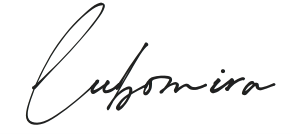
Cover photograph by me, of our wild roses.
All rights to the art and text in this article reserved to the artists and author.
For more of my writings, browse through my Art of Love.
If you wish to support me and my work, you may do so by sharing it or donate here. For personal readings with me, you may visit my Offerings.
Your support means so much to me! Thank you wholeheartedly!

